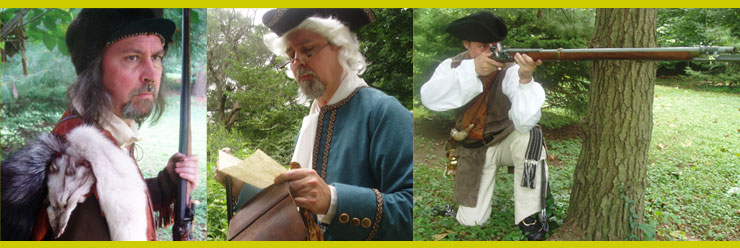


::FUR TRADE - TIMELINE::
The program piece on The Fur Trade focusses upon a variety of issues: the Catholic/Protestant rift; Native American Nations; trade goods and practices (French and British). Several artifacts are also provided, including: a Cherokee buffalo bone skinning kife, various animal hides/pelts, trade beads.
The program also addresses the causes of the French and Indian War (Seven Years War), the role of George Washington and how these factors led to the Revolutionary War.
1749 Captain Celeron begins placing lead plates as a line of French territorial control
1752 Marquis Dusquesne is Governor of Canada
Robert Dinwiddie is the Governor of Virginia and sends George Washington and Tanaghrisson ("Half-King") 450 miles in winter to Fort LeBoeuf with a letter for the French encamped there
1754 May 27, Ensign Jumonville is murdered by Tanaghrisson and Washington retreats and errects Fort Necessity along with his 400 men
July 3, Captian de Villiers (Jumoniville's brother) travels from Canada with 600 French and 100 Native Americans searching for Washington who signs the surrender papers (unknowingly admitting that he is an assassin)
1755 General Braddock (with Washington, Franklin) attack the French at Fort Duquesne. The 250 French with 640 Indians defeat Braddock.
1756 Britain declares war with France
1757 Fort William Henry (controlled by the Brittish) are attacked by the French along with 1800 Indians that fight with the French for scalps and booty). When the Brittish surrender the Indians are denied any booty. Several Indians take items anyway and smallpox is quickly spread along the many Native Nations. The Iroquios, Shawnee and Deleware make peace with the British.
1761 Trading with Indians is forbidden as many settlers begin to move west.
1763 Treaty of Paris (the French are allowed to control New Orleans)
The Royal Proclamation is issued
Pontiac's War (until 1765)